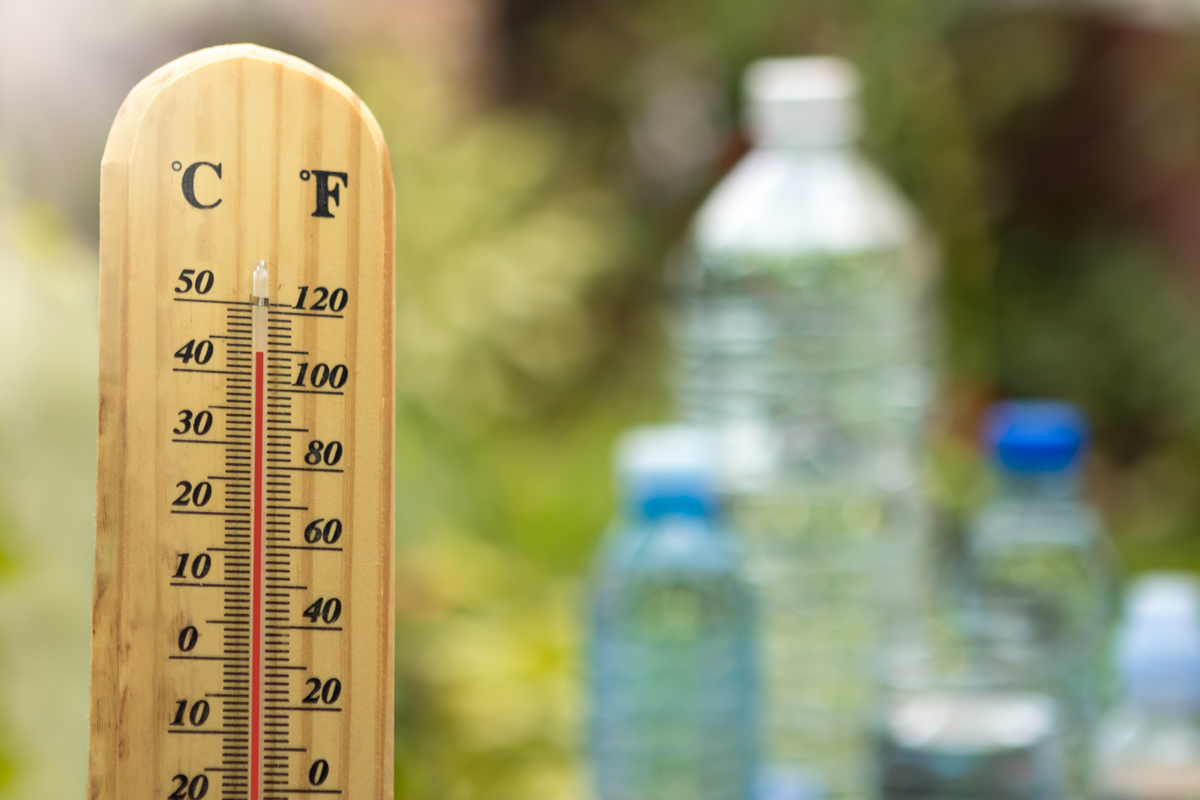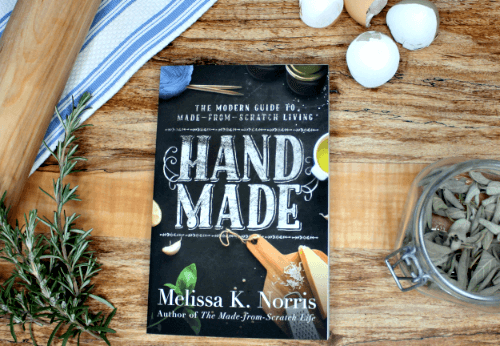Knowing how to keep your house cool in the summertime without using electricity is a good skill to have. A few weeks back, the temperature topped out at 120 degrees in our area and stayed hot for three days straight. In a house without air conditioning, we had to pull out all the stops to stay cool! Keep reading for all our tips!
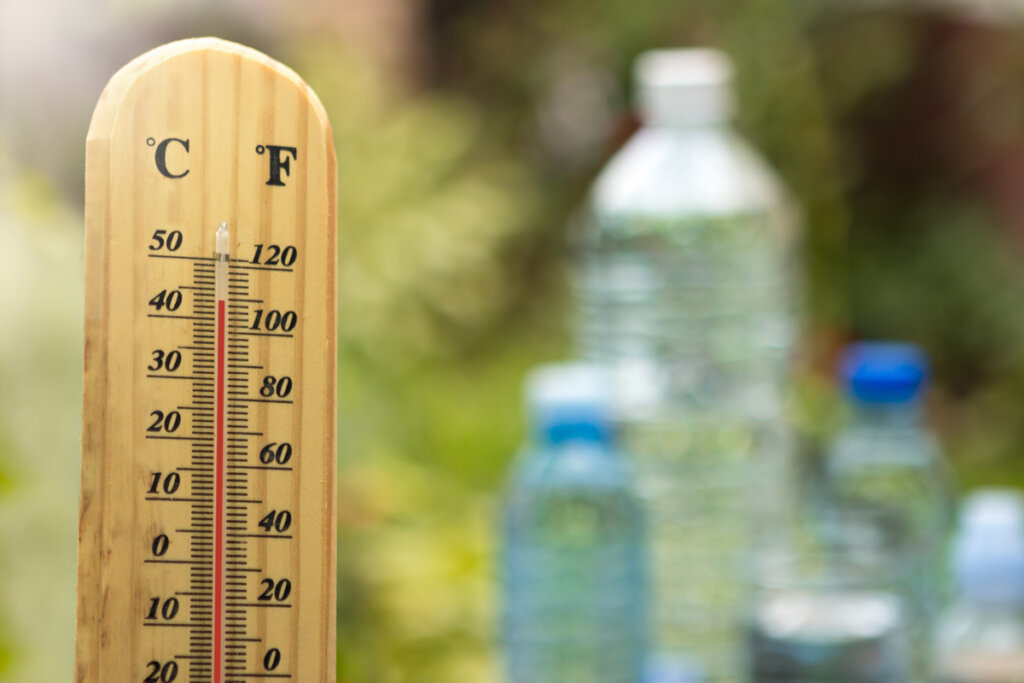
When it’s as hot as it has been this summer, the main thing on everyone’s mind is how to stay cool! I’ve shared my tips on how to stay cool in the summer and how to keep your animals cool in the summer, but this post is on how to keep your house cool without using electricity and some that require electricity but no air conditioning.
The simple thought of having to preserve our homegrown food during the heat of summer (or for that matter, standing outside in the heat to preserve on a cookstove) is an unbearable thought. But we don’t want that produce to go to waste, either.
So how do we keep our house cool when we still have to cook and take care of a busy household? We don’t have to suffer or forgo preserving all the bounty to stock our larders. Instead, let’s take a look at some old-fashioned ways to keep our homes cool in summer naturally, as well as yourself, because ya can’t keep a good homesteader down, right?!
The podcast episode in this post is an oldie but a goodie. It’s episode #148 of the Pioneering Today Podcast where we teach families how to grow, preserve and cook their own food using old-fashioned skill sets and wisdom to create a natural self-sufficient home, with, or without, the homestead.
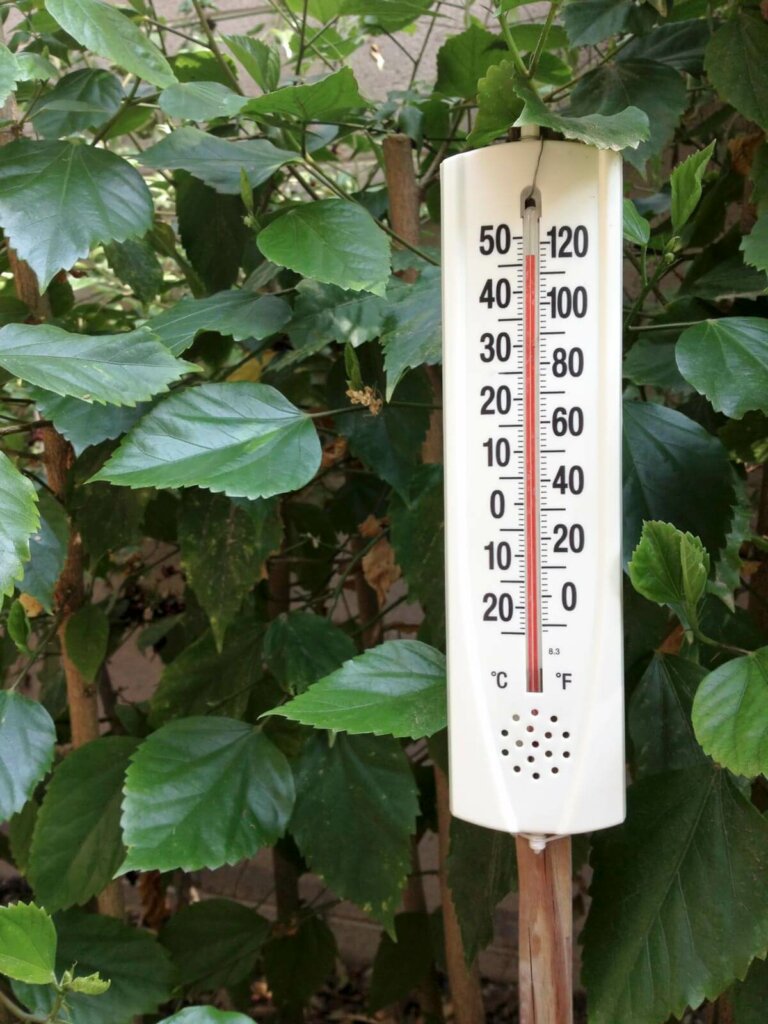
Table of Contents[Hide][Show]
8 Tips on How to Keep House Cool in Summer Naturally
Block the Windows
It’s always cooler in the shade and the same thing goes for your house, especially on southern exposure windows.
Close blinds and curtains in the morning to keep the sunlight out. You may also want to look into black-out curtains (we use these in our bedroom) which will eliminate even more heat. If you don’t have curtains you can hang sheets or blankets to block out even more sun.
Minimize Opening and Closing the Doors and Windows
It’s pretty amazing how much heat comes in by even fast opening and closing of doors throughout the day. This can be difficult with kids (I’ve been known to lock the southern exposure door so they have to use the other doors) but can make a difference of at least 2 or 3 degrees over the course of the day.
Try to use doors that are northern exposure or in the shade and open them as little as possible.
When the kids and I had come back from grocery shopping one day, we made it a game to see if we could load up all our groceries in one trip and only have to open and close the door once to get everything inside!
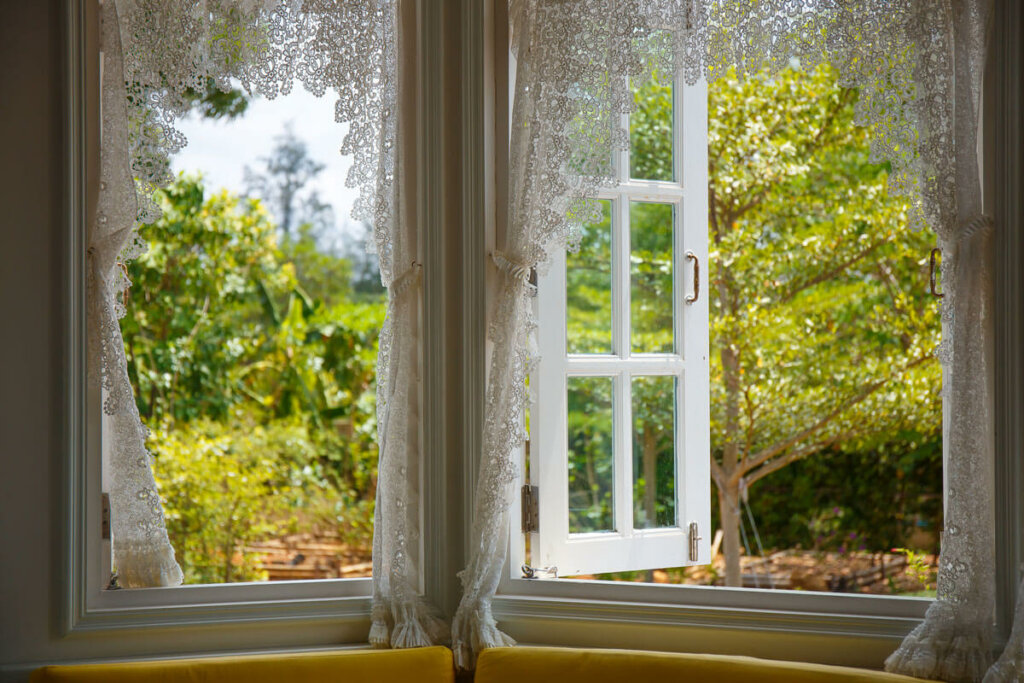
Open Doors and Windows at Night
Let nature cool off your home for you. As soon as the sun begins to fall behind the horizon, monitor the outside temperature with inside and when it’s the same or cooler, open all those windows.
In the height of summer, we generally open our windows and sliding glass doors at 7:30 pm and leave them open overnight until about 7:30 am the next morning. (We do have a guard dog and other home security measures in place, use your own discretion!)
The goal is to create as much airflow as possible. If there is no airflow, the hot air will just stay inside your house and won’t cool off properly. To create airflow, you can always place a fan in front of a window or door and pull the cool air in with the fan.
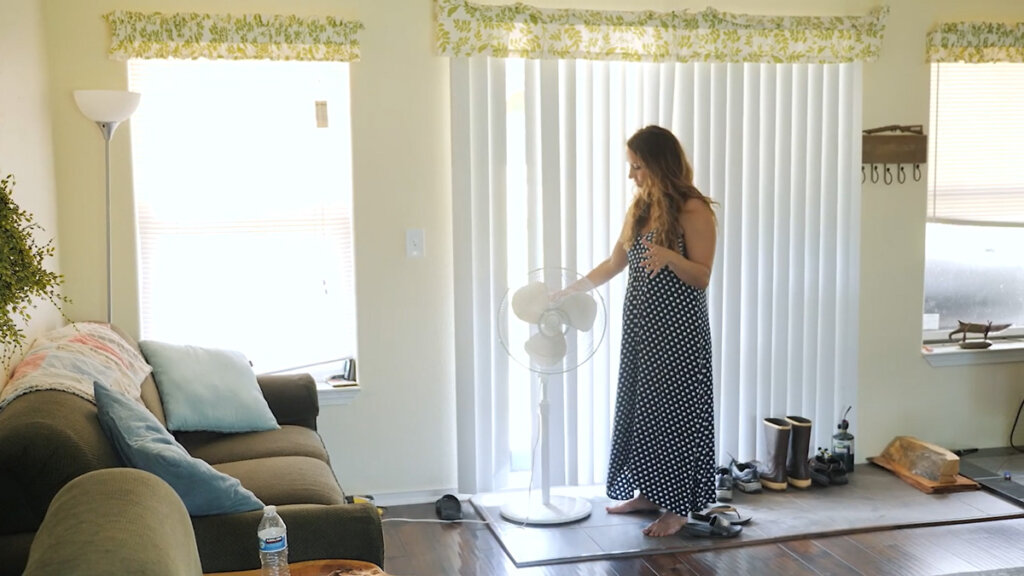
How to cool a room with fans
Though this method does use electricity, it’s less electricity than running an air conditioner and can really help cool things off quickly.
- Place a fan in front of an open window to draw and push the cooler outside into the room.
- If you have a second fan, place it at another window facing the outside to draw the hot air out of the room and house faster.
- Some people like to freeze milk jugs filled with water, then place those frozen milk jugs in front of the fan to blow cold air. This works best if you’re sitting directly in front of the fan.
Be sure screen doors are in place so you’re not bringing in the bugs with the cool air!
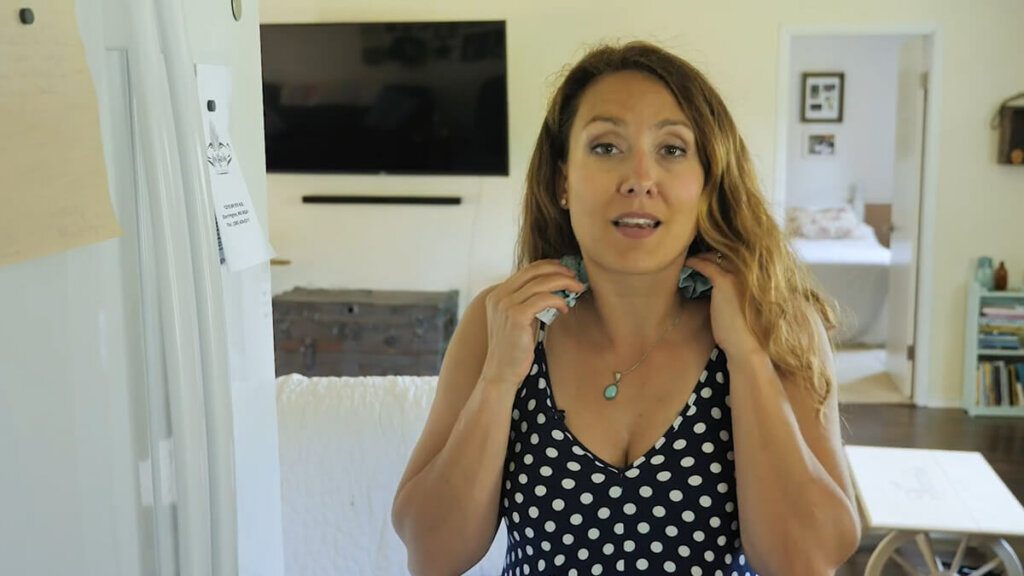
Frozen Damp Cloth
Take a few dishcloths or small towels and get them wet, squeeze out excess water and place it in the freezer. I like to freeze mine in the shape of my neck (see video for demonstration). Place these on your neck as needed and continue to swap them out with frozen towels as needed.
Though this is technically using electricity from the freezer, I’m assuming you already have a freezer and would be using it whether or not it’s hot!
I’ve also heard of people taking a spray bottle and spraying down sheets before getting into bed at night. I haven’t tried this as the frozen washcloth works great. But it’s definitely another option.

Minimize Oven and Stovetop Use
We’re a from-scratch cooking house and that doesn’t stop in the middle of summer. I adore my Instant Pot which allows me to cook my favorite meals (like Instant Pot chili) without heating up the house or being plugged in for hours on end like a slow cooker (but a slow cooker helps keep the house cool too if you don’t have a beloved Instant Pot).
If I do have to use the stove, especially when we have hot temperatures for days on end, then I try to only cook in the late evening when the house has already gotten as hot as it’s going to get, and will soon be able to get cooled off with the evening temperatures.

Cook Outdoors
In the past, I’ve used our Sun Oven (solar oven) a lot in the summer to put that heat and sunlight to use. We also have created an outdoor kitchen area, utilizing a grill or cook over an open fire.
We do a lot of grilling and Dutch oven cooking and baking during the summer months. Not only do we enjoy it, but it keeps the house cool while still allowing me to bake all of our favorite goodies and dishes.
This is especially helpful during power outages and a skill set we use all year long. We have a series on cast iron and outdoor cooking for Pioneering Today Academy members, you can click here to sign up for notification when we open for enrollment again!
Want more Dutch Oven tutorials, resources, and recipes right now? Get my step-by-step tutorial, temperature charts, and of course recipes, in Hand Made: the Modern Guide to Made-from-Scratch Living and over $53 in bonuses, click here to snag them!
Create a Summer Kitchen
This is an old practice when a separate building was used to cook and preserve foods during the heat of summer. Another variation of this is a dogtrot house, where an open breezeway connected two separate one-story structures, one side was used for sleeping and main quarters, while usually the other was for cooking and the kitchen.
We take the same idea here on our homestead and create an outdoor summer kitchen. We have a permanent fire pit for an open fire and to set our Dutch ovens in, with another pit that’s waist high with a grate over it for frying or roasting, with an accompanying long counter next to it.
I also use this same area to install an outdoor canning kitchen with a two-burner propane stove. (You’ll find a full lesson on this covered in our Home Canning with Confidence course and part of the Pioneering Today Academy)
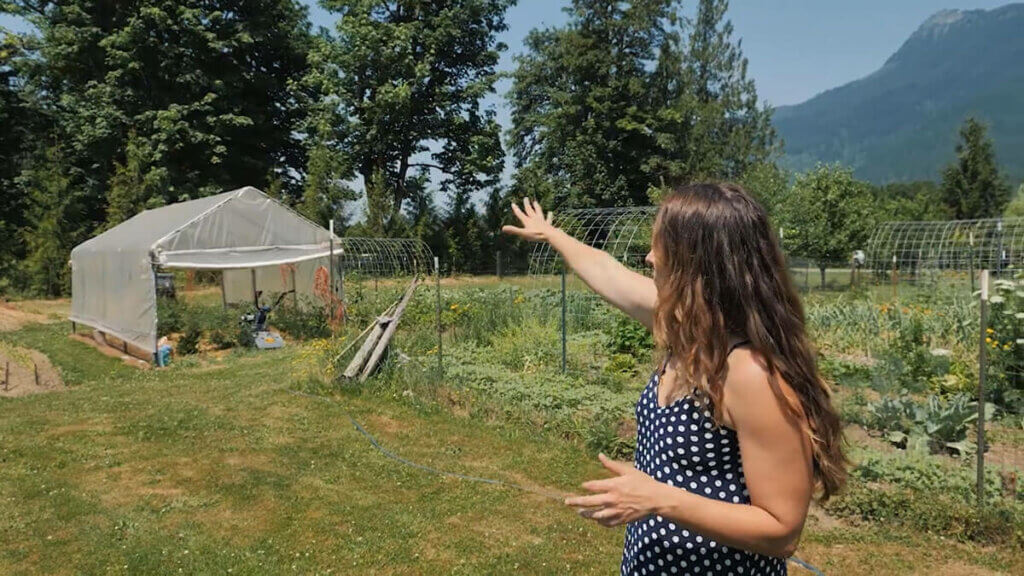
Plant Deciduous Trees Strategically
This one is going to take some time to pay off and needs to be done with thought. I say deciduous because you don’t want an evergreen tree blocking the sunlight in the dead of winter when we actually want the heat of the sun to warm our house (especially true if you have solar panels or plans of going solar in the future).
Take care you’re not planting the trees too close to the house where you’ll have the potential for limbs, roots invading the foundation or septic system, and leaves clogging the gutters.
You’ll also want to make sure you don’t plant in a spot that would block sunlight to your garden. Most fruits and vegetables require at least 8 hours of full sunlight a day for optimal production.
But when planted correctly, these trees can help provide shade from the sun a couple of hours before sunset which can drop the temperature even earlier in the evening.
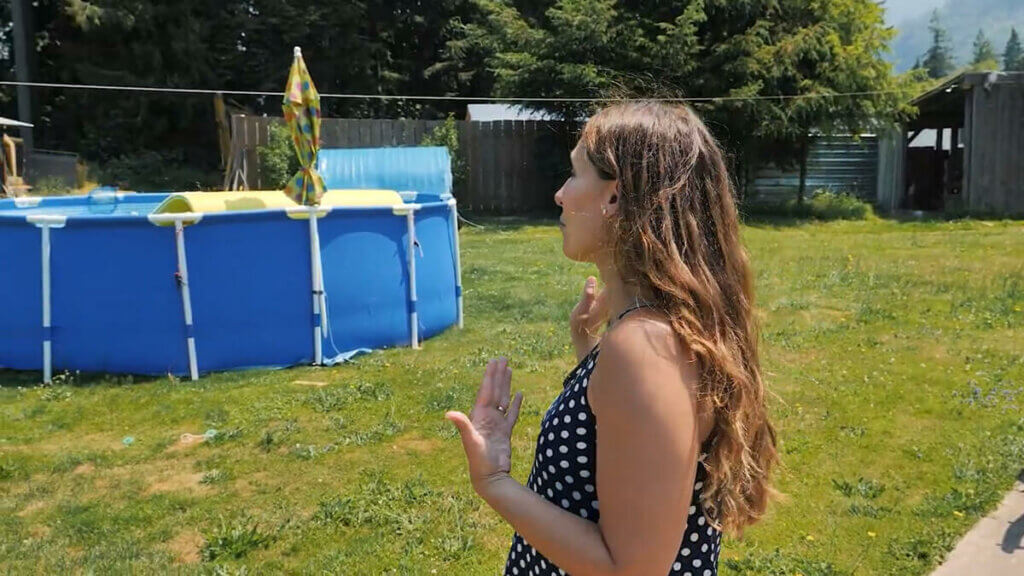
Bonus Tip – Get a Pool
Having a pool, or another body of water that you can get into can really help cool your body temperature and make even the hottest days tolerable.
This obviously isn’t an option for everyone, but even being able to jump in a cold creek or lake can be helpful.
There you have it, our best tips on how to keep your house cool in summer without electricity. Do you have any tips to add?
Related Articles You May Like:
- 7 Tips for Keeping Yourself Cool Without Air-Conditioning
- 17 Self-Sufficiency Tips from the Great Depression
- Time & Budget Saving Tips from the Great Depression & this Homesteader’s Kitchen
- 5 Life Lessons from the Great-Depression
- 7 Depression Era Tips to Stretch Your Food Budget
- 8 Depression Era Tips to Save Money Now
- Building a Great Depression Era Pantry
